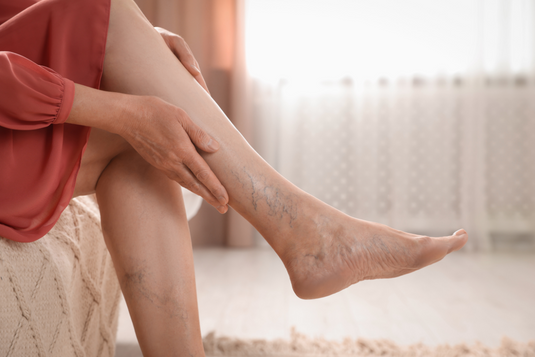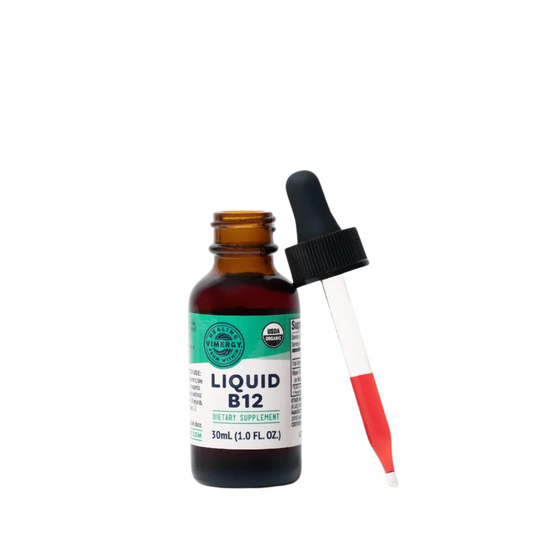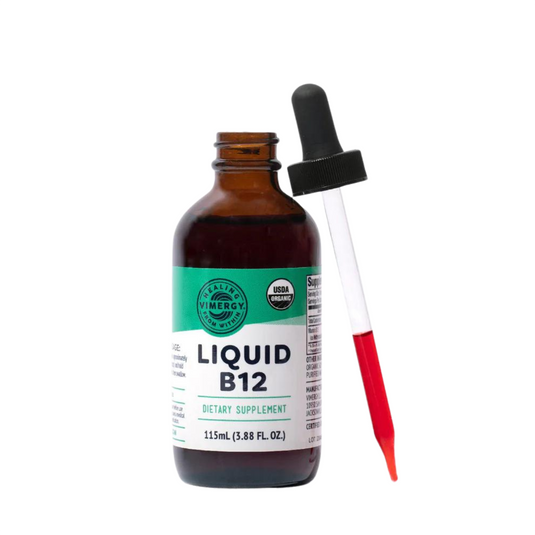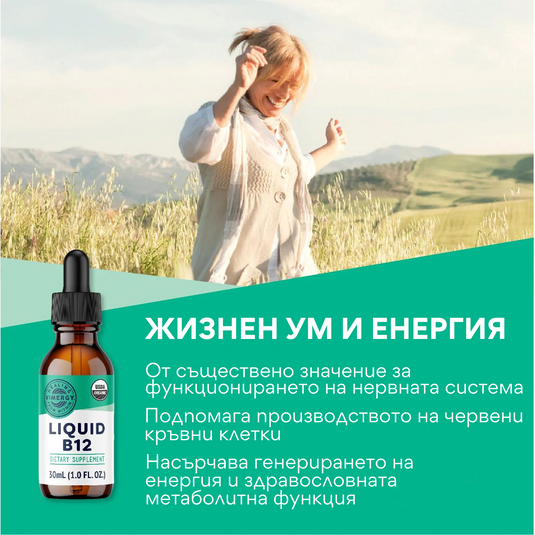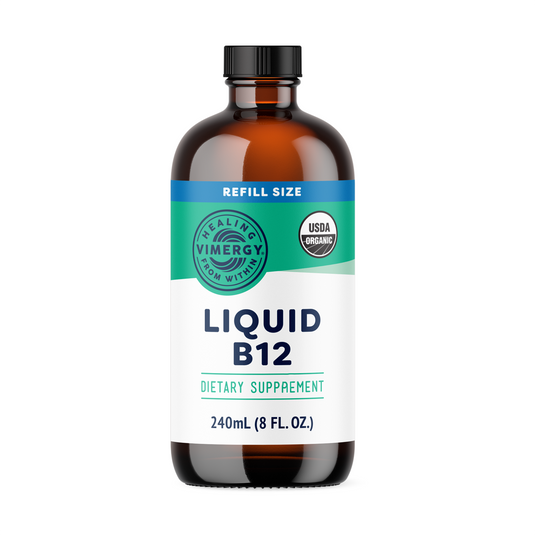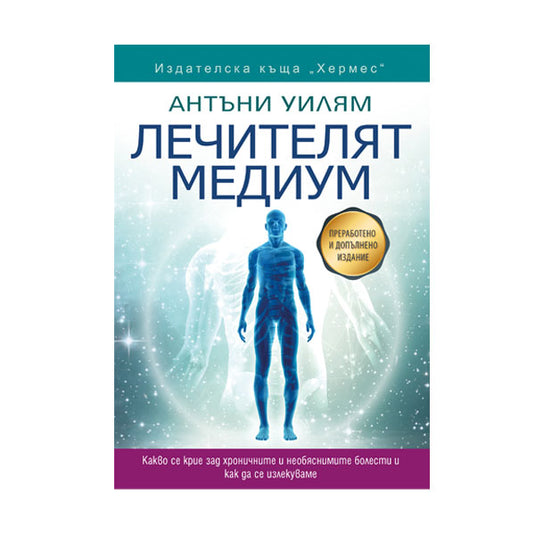Continuation of the article "Thyroid Diseases – Additional Complications (Part 1)"
In the previous part of the article, we looked at the accompanying health conditions that occur in people suffering from thyroid diseases, and specifically those related to the female reproductive system. In the second part of the article, we will pay attention to other additional health conditions that are mistakenly considered separate problems – problems with the healing of physical injuries, neuroinflammatory conditions, diabetes, hepatitis, etc.
It's incredibly depressing for anyone to receive multiple diagnoses. The reality is that there's a very good chance that these aren't lots of separate, unrelated symptoms and conditions, but rather that they're all coming from the same source.
MTHFR gene mutation
If you have been diagnosed with an MTHFR gene mutation, you should keep in mind that despite what you may hear elsewhere, it is not technically a gene mutation. What is actually happening is that a viral infection, at least EBV ( depending on the person, possibly an additional virus ), has over time affected the liver, which in turn has affected the body’s ability to produce and absorb vitamin B12 and other key, important nutrients. This raises homocysteine levels, which results in a positive MTHFR gene mutation result on today’s highly unreliable, new and modern tests. Basically, it is just another (inconclusive) test for inflammation like the ones we looked at in the article “The ‘Thyroid’ Fortune Telling Tests.” Once your viral infection is controlled or eliminated, the gene mutation test will change and show that you do not have the gene mutation—proof that you never actually had one in the first place. This is a hot topic, considering that gene mutation diagnoses are increasing, and good doctors and other practitioners are investing a lot of time and energy into this still-confusing theory. ( We have offered more on this topic in the article “Methylation and Gene Mutation” .)
Injuries that don't heal
If a trauma that seems like it should have healed long ago is still causing you pain and suffering, you may feel very depressed if doctors can't determine why you're not feeling better and your loved ones can't understand why you're not already well. Very often, people in this situation suffer from the prejudice and suspicion of others that they are making up the pain, that they are maintaining the trauma for attention or out of fear, or that they are not trying hard enough to heal. Don't let this thinking get to you! These are not the real reasons for your continued suffering.
When you get injured, the myelin sheaths that cover the nerves in the area of the wound tear like threads of yarn, causing tiny nerve root hairs to come loose and hang or pop out of the nerves. Such injured nerves trigger an “alarm” hormone that is meant to call for your body’s healing mechanisms. But when you have EBV in your body, it detects this hormone too and rushes to take advantage of it and target the nerves. The damaged root hairs give EBV the openings it needs to attach itself to the nerves and keep them inflamed for a long time—sometimes years if proper measures are not taken to treat your EBV.
If you have entered stage four of EBV, the viral neurotoxins will also be released in large quantities and will cause nerve problems like never before, even without injury. As you have already read in the previous symptoms, such as anxiety, tingling and numbness, and dizziness, high levels of these neurotoxins in the blood create sensitized, allergic, inflamed nerves simply from proximity. The result is extremely difficult wound healing when EBV is active in your body. Once you get rid of the virus, you can move on.
Fibromyalgia
The pain, suffering, tenderness, fatigue, and stiffness of fibromyalgia are the result of stage 4 EBV neurotoxins that create chronic inflammation in both the central nervous system and nerves throughout the body. This can lead to tiny cracks, tears, and exposed nerve roots that create sensitive spots on the nerves. Some aggressive strains of EBV go so far as to attach to these weak spots, creating even more inflammation and pain.
Chronic Fatigue Syndrome (CFS), Chronic Fatigue Immune Dysfunction Syndrome (CFIDS), Myalgic Encephalomyelitis (ME), Systemic Exercise Intolerance Disorder (SEID)
As the medical community struggles to understand this epic fatigue that was once referred to as laziness, the condition has been given additional names. The truth is that CFS, or whatever name you call it, is a neurological fatigue from ongoing and chronic stage 4 EBV infection. The viral neurotoxins inflame and deplete the central nervous system, creating a fatigue that is often confused with adrenal fatigue ( for more on the distinction, see the explanation of the symptom "Fatigue" in previous articles ). In their more aggressive forms, the neurotoxins cause a mild encephalitis ( which is undetectable by MRI or CT scan ), which creates even more severe fatigue. ( For more on this topic, see the article "Chronic Fatigue Syndrome" . )
Eczema and psoriasis
All of these skin conditions are actually undetected medical problems with the liver. They are not liver enzyme problems that a doctor will detect with the basic blood tests available, which don’t detect much of what’s going on with this complex organ. Rather, eczema and psoriasis are caused by a pathogen—usually EBV —in the liver that feeds on high levels of toxic copper in the liver, as well as old deposits of DDT and other pesticides. When the virus feeds on these poisons, it releases a potent dermatotoxin that travels up to the skin, causing severe rashes, scaling, cracking, irritation, and itching.
Ideally, the liver would filter these dermatotoxins like other waste, and the intestinal tract and kidneys would flush them out of the body. However, when EBV overloads the liver and the rest of the body, the normal detoxification processes are disrupted, so these toxins end up trying to escape through the skin. The worse the liver is, the more severe the eczema or psoriasis is, as impaired liver function means more dermatotoxins are released. People with more severe eczema or psoriasis are also more likely to experience scalp hair loss. ( Learn more about this in the article “Eczema and Psoriasis . ”)
Lupus
The medical community has yet to figure out what causes this inflammatory condition, which is why it is often mistakenly labeled as autoimmune. This is not the case at all. Lupus is not evidence that the immune system is going haywire and targeting the body. The real cause of lupus is EBV . Essentially, lupus is an allergic reaction to the waste products of the virus: dermatotoxins ( hence the skin problems so often associated with lupus ), neurotoxins, byproducts, and viral corpses. When too much of these waste products accumulate over time, then by stage 3 of EBV, the body can become hypersensitive to them, leading to various symptoms of inflammation. It also raises homocysteine levels, which causes false positives on gene mutation tests. ( When you clear EBV, these gene mutation tests return to normal. )
Because lupus begins in the third stage, when EBV also targets the thyroid, everyone who has lupus also has a dysfunctional thyroid, whether they know it or not.
Multiple sclerosis (MS)
The Epstein-Barr virus is the underlying cause of MS . There are two types of EBV that lead to this diagnosis: (1) In this type of EBV, a person experiences neurological symptoms such as weakness in the legs and arms, slight tremors, and severe numbness and tingling. These are the result of EBV neurotoxins that inflame various nerves in the body. It is usually diagnosed as MS ( or Lyme disease ), even though no lesions are visible on medical scans. (2) This other type of EBV reaches the brain, where it causes lesions, mild forms of encephalitis, and very similar symptoms to the previous type. If you are diagnosed with brain lesions, do not be afraid of them. Hundreds of thousands of people have various lesions in the brain, from small to large, and go on to live their lives. In many cases, the symptoms that accompany this type of EBV are not from the lesions themselves. They are also from these EBV neurotoxins.
Since MS occurs in the fourth stage of EBV, people with this condition also have a thyroid problem, whether it is diagnosed or not. The best way to deal with either type of MS diagnosis and the thyroid problem is to deal with the EBV present and strengthen the nervous system. ( For more information on MS, see the chapter on it in the book The Medium Healer .)
Lyme disease
Depending on your doctor, some symptoms may be diagnosed as MS, fibromyalgia, chronic fatigue syndrome , rheumatoid arthritis, amyotrophic lateral sclerosis (ALS) , a parasitic infection, lupus, or Lyme disease. Because all of these conditions are caused by viruses, the lines between these diagnoses often blur. That's right: as Anthony Williams reveals in his first book, Lyme disease is viral, not bacterial. We don't say this to deny the progress that has been made in the medical community, which has come from recognizing the many people who suffer from Lyme disease symptoms and working to find a cure for them. The next step will be for medical research to reveal that the cause of Lyme disease symptoms is viral, and the bacteria are just coincidentally present. The symptoms of Lyme disease in most people are caused by EBV , although all other viruses in the herpes virus family can also cause them, including HHV-6, all the way to the undiscovered HHV-9, HHV-10, HHV-11, and HHV-12. Surprise! If what you're reading shocks you, check out the chapter on Lyme disease in the book "The Medium Healer" where you'll find answers to all your questions.
If you’ve already read this chapter, you may have noticed that its list of Lyme disease triggers looks very similar to the thyroid virus triggers in the article “The Truth About Thyroid.” This is because both Lyme disease and thyroid diseases are viral, so there is a lot of overlap in what triggers their symptoms.
Rheumatoid arthritis (RA)
This swelling, pain, stiffness, and sometimes deformity of the joints is not an autoimmune disease—that explanation for RA couldn’t be further from the truth. The body doesn’t go crazy and start attacking your joints. Rather, there’s a specific strain of EBV that gets into your connective tissue, joints, and tendons in its fourth stage, causing inflammation that’s evidence that your body is trying to keep the invader at bay. Swelling in your knuckles, neck, and the like is a sign that your immune system is fighting to keep the virus from burrowing deeper and causing permanent nerve and tissue damage. In milder forms, this can manifest as mysterious aches and pains. In advanced forms, people get severe joint swelling and a diagnosis of rheumatoid arthritis.
Connective tissue disorders (including Ehlers-Danlos syndrome)
These conditions are caused by a stage four (sometimes stage three) strain of EBV that feeds on various toxins in the liver, including accumulated DDT and other pesticides, mercury, and certain solvents. Many of these can run in families, inherited from past generations. As the virus thrives on this fuel mix, it releases both neurotoxins and a specific connective tissue toxin—a combination that weakens connective tissue while simultaneously inflaming nerves. Since this is a late stage of EBV disease, it is a sign that you also have thyroid problems, even though it is not a symptom of the thyroid.
Sarcoidosis
Some forms of EBV are less focused on the central nervous system and instead focus on the lymphatic system and organs. In these cases, as the virus progresses to later phases and stages, many viral cells are also left behind to attack and inflame the lymph nodes around the lungs, heart, liver, and neck, creating swelling and scarring throughout the lymphatic system and in and around organs. This leads to sarcoidosis in the fourth stage of the virus, which means that sarcoidosis is an indication that at this point someone has also developed thyroid disease (third stage of EBV), although again it is not caused by the thyroid.
Pulmonary fibrosis, cystic fibrosis, interstitial lung disease
All of these conditions, which often affect the lungs, are caused by EBV and antibiotic-resistant strains of EBV's cofactor, streptococcal bacteria —the same culprit behind many common problems, including chronic urinary tract infections (UTIs) and strep throat. Avoiding eggs, dairy, wheat, and pork is extremely important for these conditions.
Hypoglycemia and type 2 diabetes
Very often, type 2 diabetes goes hand in hand with thyroid disease because EBV , other toxins, and a high-fat diet stress the liver, making it sluggish or sluggish and unable to store glucose as glycogen to protect the pancreas you rely on for insulin. At the same time, as the adrenal glands overcompensate for the thyroid, all that excess adrenaline burns out the pancreas, further impairing its ability to produce the insulin you need. The result is a blood sugar imbalance. ( For a full explanation of hypoglycemia and type 2 diabetes, see their dedicated chapter in Anthony William’s first book, The Medium Healer .)
Acid reflux
When someone suffers from heartburn, half the problem is in the stomach and the other half is in the liver. This is because acid reflux is actually caused by low levels of hydrochloric acid (a beneficial acid) in the stomach, which usually occurs when the liver is malfunctioning from EBV and therefore does not produce enough bile to aid in digestion. As a result, the bad acids in the stomach increase. When they enter the esophagus, the sensation is a burning pain.
It is unknown to medical research and science that EBV can not only contribute to acid reflux , but this condition also interferes with thyroid healing. When people have elevated levels of unproductive acids in their stomachs due to low levels of hydrochloric acid (the good acid), these bad acids tend to rise up the esophagus during sleep, all the way to the throat, where they release ammonia, which can penetrate directly into the thyroid gland and prevent it from healing. ( You will learn more about this topic in the article “Treating Acid Reflux” . )
Streptococci
Since streptococci are a cofactor of EBV , they thrive when the virus does. That's why people with thyroid problems are no strangers to sinus problems, bladder sensitivity, urinary tract infections (UTIs), bacterial vaginosis, small intestinal bacterial overgrowth (SIBO) , irritable bowel syndrome (IBS) , acne, and sore throats. All of these are linked to streptococcal bacteria .
Celiac disease
Celiac disease is not an autoimmune disease, nor is it limited to gluten sensitivity. Rather, wheat gluten is one of the triggers for this inflammation of the intestinal tract, which is actually caused by EBV’s cofactor, streptococci . Other favorite foods of streptococci found in the gut include eggs, dairy, and corn, along with biofilm, neurotoxins, viral envelopes, other EBV waste products, and toxic heavy metals that are excreted by the liver into the intestinal tract. These elements provide fuel for streptococci to thrive and irritate.
Raynaud's syndrome
This skin discoloration occurs as a result of the liver being partially blocked by EBV and its waste products being returned to the bloodstream. In most cases of Raynaud's syndrome, someone has had a long-standing EBV infection, dating back to childhood, and while much of the virus has moved to the thyroid and beyond, some of the virus has remained in the liver, causing long-term problems. When the blood becomes filled with these viral toxins, it thickens, causing the blood to become toxic, and the result is poor circulation to the extremities, which leads to their discoloration. Many people with Raynaud's also experience a slight tingling sensation, and sometimes even numbness, as the sludge that is returned to the bloodstream contains neurotoxins.
Cushing's syndrome
In medical circles, it is generally accepted that Cushing's syndrome is a dysfunction of the adrenal glands, and that is true to some extent. What remains unknown for now is the full root cause: when you have had thyroid disease caused by EBV for a long time, your adrenal glands have spent years on overdrive, trying to fulfill their role as makers and balancers of thyroid hormones. The liver, strained by EBV, also puts additional strain on the adrenal glands. In addition to this strain on the adrenal glands, people with Cushing's disease have usually also faced tremendous stress in their lives and other triggers, such as poor nutrition, that have weakened the adrenal glands. Pushed to the limit by these multiple sources, the adrenal glands become dysfunctional, and the result is weight gain in certain areas of the body, as well as frailer arms and legs. Although you may hear otherwise, true Cushing's disease usually occurs when people are between the ages of their mid-40s and mid-60s, due to the time it takes for the adrenal glands to become so unbalanced.
Hepatitis C
This chronic inflammation of the liver is caused by EBV , which forms scars in the organ – a discovery that medical research and science will soon make. Because of the years it takes for EBV to create this destructive scar, by the time it turns into hepatitis C, other EBV cells have already advanced to the thyroid gland or beyond, meaning that people with hepatitis C also face a compromised thyroid gland. This long period of time it takes to develop is also why hepatitis C often presents in older people.
Plantar fasciitis
When EBV releases large amounts of neurotoxins into the body, these neurotoxins spread and settle on weak nerves in the body. If you have ever been overly active and overexerted your feet or injured your feet or ankles, whether from dancing, athletics, a sprained ankle, or an accident, the neurotoxins find these sensitive nerves almost like a target, leading to inflammation and pain in nerves such as the tibial and sciatic. In many people, plantar fasciitis occurs long after the initial injury, because it may be that the injury occurred years before a person had an active, late-stage EBV infection.
Parathyroid disease
Although the four small glands known as the parathyroids function separately from the thyroid gland, when they go wrong, the culprit is the same as in thyroid disease: EBV . Together, these glands, each about the size of a shelled sunflower seed, are responsible for maintaining a balanced calcium level in the body, primarily by regulating the level of calcium in the blood. Thyroid disease usually means that one or more of these glands has become inflamed, enlarged, calcified, cystic, or tumorous due to an EBV infection ( medical research and science still don't know what causes it ), which disrupts the body's system for producing and controlling calcium.
There is a connection between the thyroid and parathyroid glands: when the body creates thyroid nodules to try to protect the EBV cells, the parathyroid gland gets involved. Remember, nodules are calcium stores – so the parathyroid gland can respond to this nodule formation by overproducing parathyroid hormone ( to help the body create the nodules ) or in some cases by underproducing ( to protect calcium stores ), depending on your individual needs. When the parathyroid gland is overactive in this case, it usually doesn’t show up on tests because the extra calcium is being put to immediate use.
The parathyroid gland also receives physical protection from the thyroid gland – these glands need to be protected from the sun, and the wing-like structure of the thyroid gland provides this protection.
Like thyroid problems, parathyroid problems don’t always show up on tests, so there are people with undiagnosed hyperparathyroidism. One common cause of this condition is that EBV leaves the thyroid gland at the end of stage three and begins to target the central nervous system. At this point, the brain begins to need more electrolytes to support neurotransmitter function and electrical impulses, which triggers a signal from the parathyroid gland for more calcium to support this extra electrical function that the central nervous system needs to deal with EBV . The virus can also target the parathyroid gland itself, disabling it and directly causing parathyroid disease. All of this is still unknown to medical research and science.
The article uses materials from Anthony William's book "Healing the Thyroid Gland" . More articles on the topic are coming soon to our blog!
Other articles about the thyroid gland:
“The truth about the thyroid gland” ;
“Thyroid Diseases – How It All Begins” ;
“Thyroid Diseases – Explaining Your Symptoms (Part 1)” ;
“Thyroid Diseases – Explaining Your Symptoms (Part 2)” ;
“Thyroid Diseases – Explaining Your Symptoms (Part 3)” ;
“Thyroid Diseases – Additional Complications (Part 1)” ;
“Thyroid cancer” ;
“[Video] Do you have Hashimoto's thyroiditis? – Anthony William speaks” ;
“Anthony William on insomnia and sleep problems in thyroid diseases” ;
“Anthony William's Tips for Treating Sleep Problems and Why Bad Dreams Are Good” ;
“Why are women more susceptible to thyroid diseases” ;
“Healer Medium's 90-Day Thyroid Therapy (Part 1)” ;
“Healer Medium's 90-Day Thyroid Therapy (Part 2)” ;
“The “divination tests” for the thyroid gland” ;
“Anthony William on Thyroid Medications” ;
“Anthony William on life without a thyroid gland” ;
“Anthony William reveals the truth about iodine” ;
“Anthony William reveals the truth about zinc” ;
“Powerful Healing Foods for the Thyroid” ;
“Which foods to avoid with thyroid diseases” ;
“Herbal remedies and nutritional supplements for the thyroid gland” ;
“How celery juice helps with thyroid diseases” ;
“Tea for treating the thyroid gland” ;
“Leben Broth for the Thyroid” ;
“Healing juice for the thyroid gland” ;
“Healing smoothie for the thyroid gland” .


